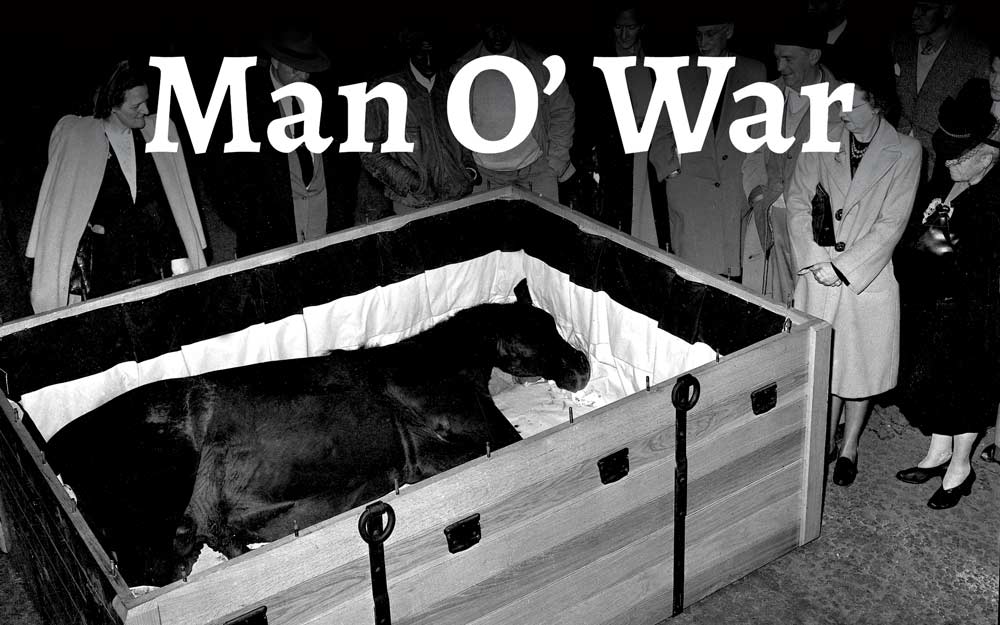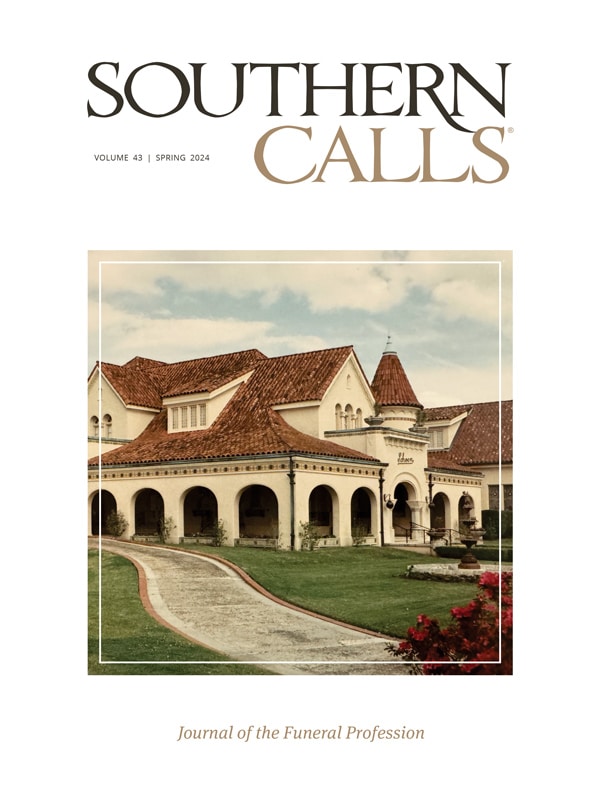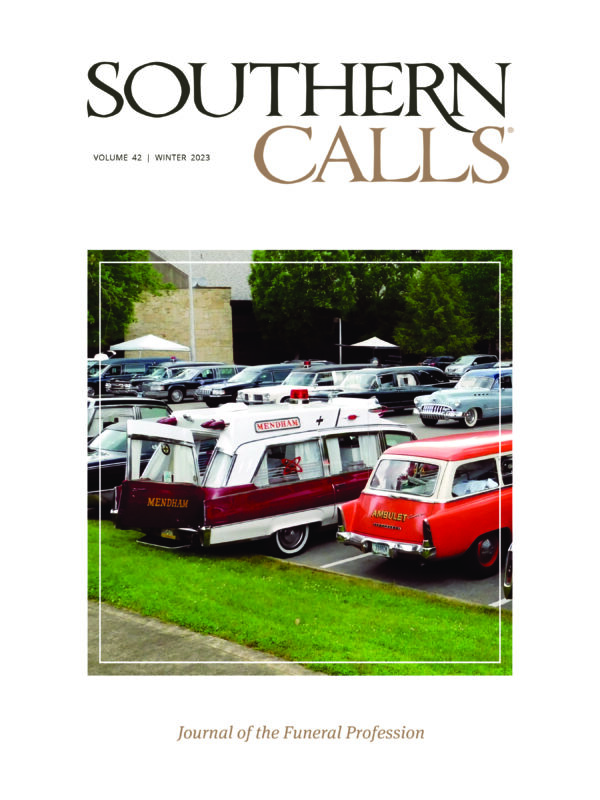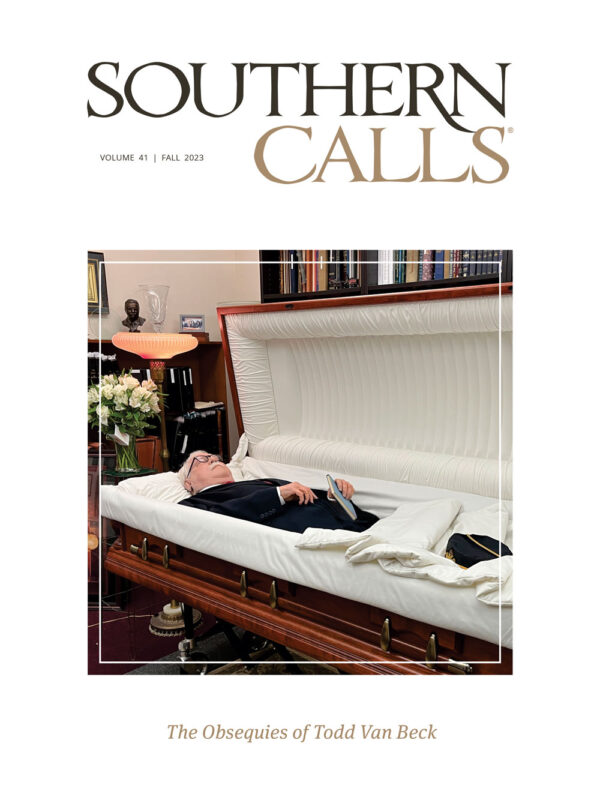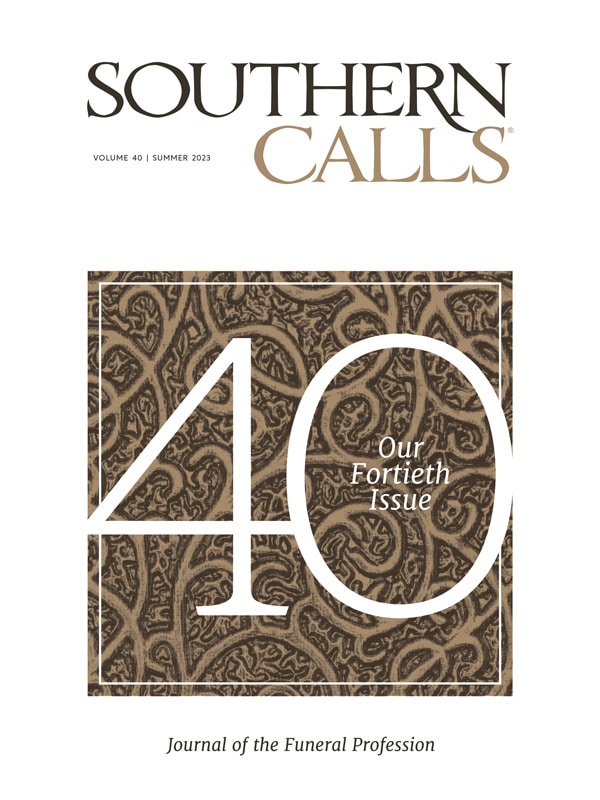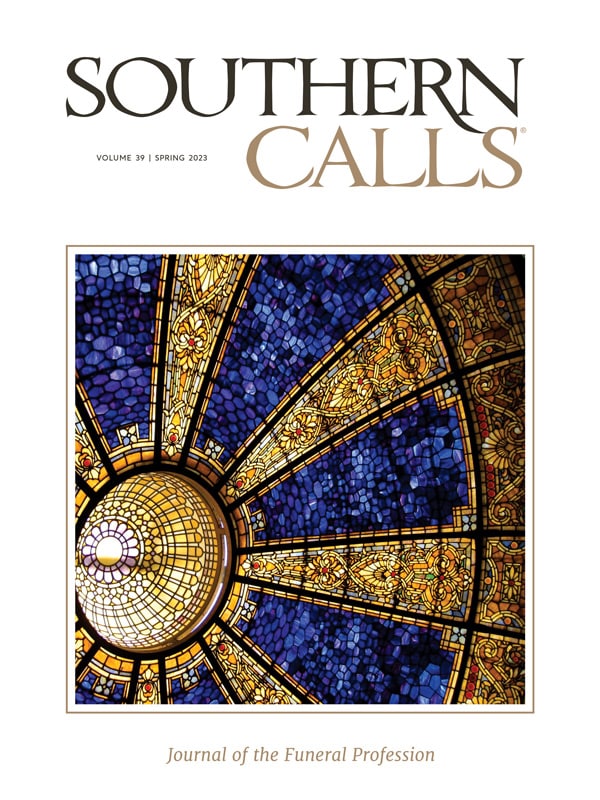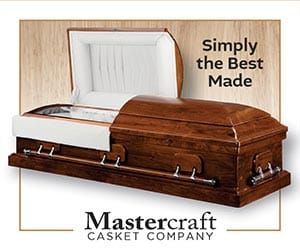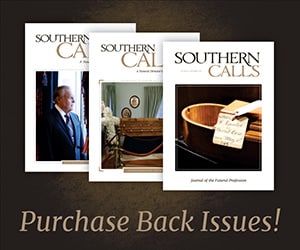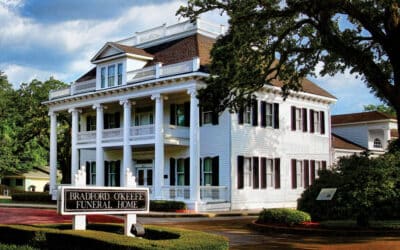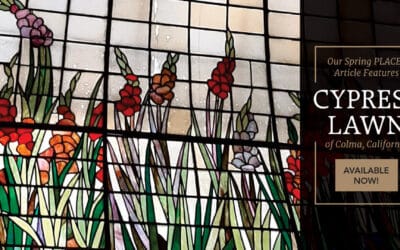Southern Mourning | from Southern Calls Issue 9, September 2015
(Opening Image: As visitors look on, legendary thoroughbred Man O’ War lies in state in a casket lined with his racing colors at owner Samuel Riddle’s Faraway Farm in Lexington, Kentucky, Nov. 3, 1947. Man O’ War won 20 of the 21 races he started. (H.B. Littell/AP)
Man o’ War was more than a racehorse. He sparked imaginations and embodied power, dominance and imperious pride. Racing in 1919 and 1920, he won 20 of 21 starts – being odds-on in every single start. Along the way he set five American records, seven track records, and he equaled an eighth. In a time considered “the golden age of sports,” Man o’ War stood as horse racing’s Babe Ruth. His was a spirit that could be bridled yet never tamed.
Man o’ War had been ill for months, but his final days were said to be particularly uncomfortable. Despite being given sedatives, he thrashed on the floor of his stall, fighting “the pain as if it were a visible opponent,” The Blood-Horse wrote. “He was never one to suffer placidly anything that displeased him.”
Just after noon on Saturday, November 1, 1947, the greatest of all racehorses breathed his last. Newspaper and magazine articles at the time reported.
Man o’ War was believed to be the first horse embalmed for a funeral. He required 23 bottles of embalming fluid. Each bottle of concentrated fluid, when diluted, equaled about a gallon; human bodies need only two.

It took more than two hours to embalm Man o’ War. During the procedure, the Lexington Herald reported, “the big horse’s eyes and mouth were closed and he ‘looked just like he was taking a nap.’”
It took 13 men to lift the horse’s 1,300-pound body from his stall. With the aid of a homemade sling, he was lowered into a 6×9.5×3.5-foot natural-finish oak casket built a few weeks earlier. Lined in owner Samuel D. Riddle’s yellow and black colors, the box was positioned in the center aisle of the barn. From their stalls, both War Admiral and War Relic, both at stud, could view their sire’s casket.
It took three days to bury Man o’ War. Heavy rains kept gravediggers from their task in his paddock, which was to be his final resting place.
After his death, even more people trekked to Faraway, this time to see Man o’ War lie in state. Some of the 2,500 mourners reached into the casket to touch, or pat, the famous red stallion. And for his funeral on November 4, parked cars lined Huffman Mill Pike for nearly a mile. Estimates of the crowd ranged from 500 to 2,000. The elderly Mr. Riddle was absent, but he sent a spray of white and yellow carnations. The arrangement was one of eighteen placed near the grave. The plot was surrounded by a moat 10 feet wide and 4 to 6 feet deep. Sixteen pin oak trees – marking the number of years Man o’ War stood at stud – had been planted around it. The walkway to the site was lined with 30 hornbeam trees representing Man o’ War’s age.
The ceremony that gloomy afternoon included nine eulogies, lasted approximately 30 minutes and was broadcast on the radio. Man o’ War’s casket remained open.
On his nearby barn, a scroll representing the First Cavalry Division of the U.S. Army – of which Man o’ War was an honorary colonel – was draped in black ribbon. On the other side of the world, in Tokyo, 3,000 members of that cavalry division paid their respects with military honors. Racetracks around the country held a moment’s silence at 3 p.m., the time of his funeral.
At 3:24, buglers from the Man o’ War Post of the American Legion, dressed in the famous Riddle silks, played the mournful Taps. Some floral displays were shaped in downward horseshoes, and petals had fallen on the podium and fresh dirt. A banner reading “ABC WLAP” hung from the microphone, and there was lighting in place for newsreel cameras. A large marble base that read “MAN O’ WAR” would eventually support a larger-than-life-sized bronze by Herbert Haseltine. Dirt mounds were hidden beneath fabric, while a large, yawning hole in front of the base beckoned.
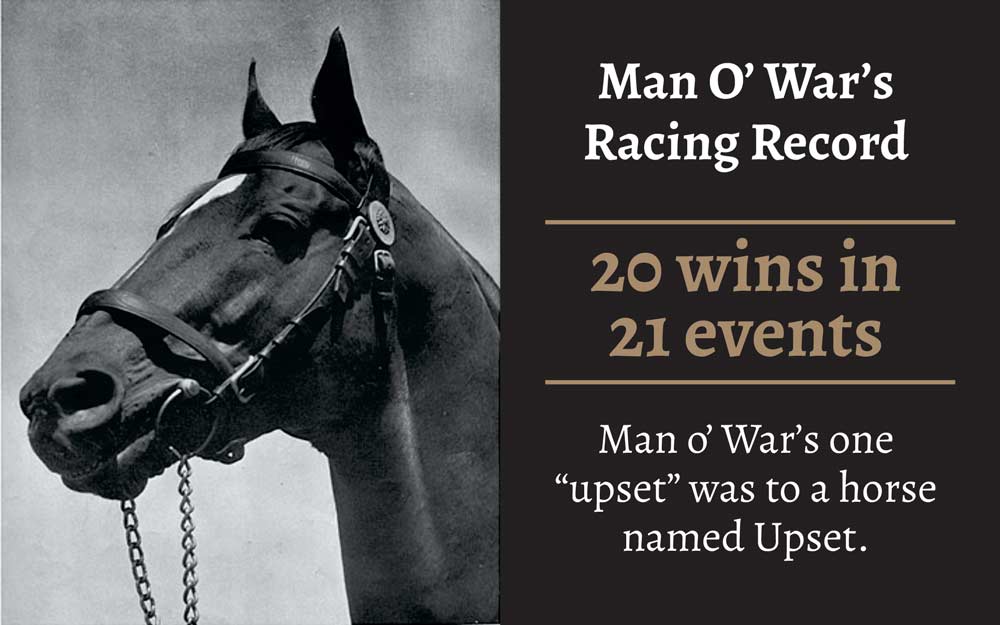
Most poignant, and a bit unsettling, are the images of Man o’ War in the tight-fitting casket. He was carefully laid out, aimed to the left, and his eyes were closed. His head was tucked low, his neck wrinkled, and his ears scrunched in the corner. Where his red-gold coat burned brilliantly in the portrait taken six days earlier, in black-and-white it now seemed uneven. A lump near his shoulder was more pronounced in death than in life.
His legs were perfectly placed together and his hooves were cleaned – almost shiny. His tail was obscured, a pillow supported his head, and his genitals were covered with a dark cloth. He had a scuffed elbow, something resembling a girth mark around his belly – perhaps from his being moved after death – and his body was deflated.
With the exception of the few people involved in Man o’ War’s exhumation three decades later, when he and his statue were moved to the Kentucky Horse Park, this was the final time that Man o’ War was a part of our physical world.
While the photographs might make some squeamish, they represent to me more than a simple record of a horse’s funeral. They represent a beloved ruler lying in state, his faithful subjects paying their last respects. They represent the end of an era – the most magical and significant time in our sport’s history. And they show that, although his blood still courses through countless Thoroughbreds like Blame, Rachel Alexandra and Zenyatta, Man o’ War was, after all, mortal.
Reprinted with permission
Subscribe today, or order any of our highly collectible issues online in our Shop
***
Check back on Fridays for another nugget of funereal miscellany!
